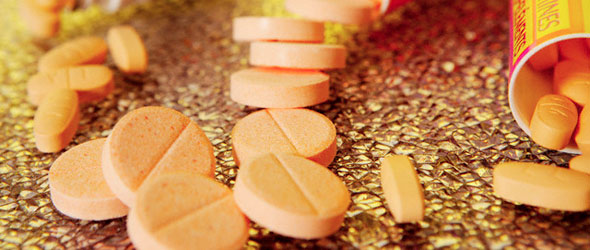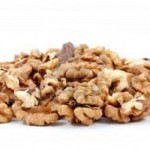In response to the article [ vitamins explored Vit C ] on the harmfulness of Vit C inre kidney stones. The article on Vitamin C regarding its benefits in ridding kidney stones and its overall antiviral/antibacterial effects with megadoses, by Robert McHeffey.
There are five types of kidney stones:
1. Calcium phosphate stones are common and easily dissolve in urine acidified by Vitamin C.
2. Calcium oxalate stones are also common but they do not dissolve in acid urine.
3. Magnesium ammonium phosphate (struvite stones) are much less common, often appearing after an infection. They dissolve in vitamin C acidified urine.
4. Uric acid stones result from a problem metabolizing purines (the chemical base of adenine, xanthine, theobromine [in chocolate] and uric acid). They may form in a condition such as gout.
5. Cystine stones result from a hereditary inability to reabsorb cystine. Most children’s stones are this type, and these are rare.
The Role of Vitamin C in Preventing and Dissolving Kidney Stones:
The very common calcium phosphate stone can only exist in a urinary tract that is not acidic.
Ascorbic acid (vitamin C’s most common form) acidifies the urine, thereby dissolving phosphate stones and preventing their formation. Acidic urine will also dissolve magnesium ammonium phosphate stones, which would otherwise require surgical removal. These are the same struvite stones associated with urinary tract infections. Both the infection and the stone are easily cured with vitamin C in large doses. BOTH are virtually 100% preventable with daily consumption of much-greater-than-RDA amounts of ascorbic acid. Think grams, not milligrams! A gorilla gets about 4,000 mg of vitamin C a day in its natural diet. The US RDA for humans is only 60 mg. Someone is wrong, and I don’t think it’s the gorillas.
The common calcium oxalate stone can form in an acidic urine whether one takes vitamin C or not. However, if a person gets adequate quantities of B-complex vitamins and magnesium, this type of stone does not form. Any common B-complex supplement twice daily, plus about 400 milligrams of magnesium, is usually adequate. Ascorbate (the active ion in vitamin C) does increase the body’s production of oxalate. Yet, in practice, vitamin C does not increase oxalate stone formation. Drs. Emanuel Cheraskin, Marshall Ringsdorf, Jr. and Emily Sisley explain in The Vitamin C Connection (1983) that acidic urine or slightly acidic urine reduces the UNION of calcium and oxalate, reducing the possibility of stones. “Vitamin C in the urine tends to bind calcium and decrease its free form. This means less chance of calcium’s separating out as calcium oxalate (stones).” (page 213)
Also, the diuretic effect of vitamin C reduces the static conditions necessary for stone formation in general. Fast moving rivers deposit little silt. Furthermore, you can avoid excessive oxalates by not eating (much) rhubarb, spinach, or chocolate. If a doctor thinks that a person is especially prone to forming oxalate stones, they may take their vitamin C in a buffered form. Instead of ascorbic acid, they might use vitamin C as non-acidic “ascorbate.”
Magnesium, calcium, sodium and potassium ascorbates are all non-acidic. Other “buffered” vitamin C preparations are usually made from ascorbic acid mixed with powdered limestone (Dolomite). Linus Pauling says you can take a little sodium bicarbonate with ascorbic acid to neutralize it.
Ways for ANYONE to reduce the risk of kidney stones:
1. Maximize fluid intake. Especially drink fruit and vegetable juices. Orange, grape and carrot juices are high in citrates which inhibit both a build up of uric acid and also stop calcium salts from forming. (Carper, J. “Orange Juice May Prevent Kidney Stones,” Lancaster Intelligencer-Journal, Jan 5, 1994)
2. Control urine pH: acidic urine helps prevent urinary tract infections, dissolves both phosphate and struvite stones, and will not cause oxalate stones.
3. Eat your veggies: studies have shown that dietary oxalate is generally not a significant factor in stone formation. I would go easy on rhubarb and spinach, however.
4. Most kidney stones are compounds of calcium and most Americans are calcium deficient. Instead of lowering calcium intake, reduce excess dietary phosphorous by avoiding carbonated soft drinks, especially colas. Soft drinks contain excessive quantities of phosphorous as phosphoric acid. This is the same acid that has been used by dentists to etch tooth enamel before applying sealant. Remember that Americans get only about 500 mg of dietary calcium daily, and the RDA is 800 to 1200 mg/day. Any nutritionist, doctor or text suggesting calcium reduction is in serious error.
5. Take a magnesium supplement of AT LEAST the US RDA of 300-350 mg/day (more may be desirable in order to maintain an ideal 1:2 balance of magnesium to calcium)
6. Be certain to take a good B-complex vitamin supplement daily, which contains pyridoxine (Vitamin B-6). B-6 deficiency produces kidney stones in experimental animals.Remember: * B-6 deficiency is very common in humans * B-1 (thiamine) deficiency also is associated with stones (Hagler and Herman, “Oxalate Metabolism, II” American Journal of Clinical Nutrition, 26:8, 882-889, August, 1973)
7. Additionally, low calcium may itself CAUSE calcium stones (L. H. Smith, et al, “Medical Evaluation of Urolithiasis” Urological Clinics of North America 1:2, 241-260, June 1974)
8. For uric acid/purine stones (gout), STOP EATING MEAT! Nutrition tables and textbooks indicate meats as the major dietary purine source. Naturopathic treatment adds juice fasts and eating sour cherries. Increased Vitamin C consumption helps by improving the urinary excretion of uric acid. (Cheraskin, et al, 1983). Use buffered ascorbate “C”.
9. Persons with cystine stones (only 1% of all kidney stones) should follow a low methionine diet and use buffered C.
10. Kidney stones are associated with high sugar intake, so eat less (or no) added sugar (J. A. Thom, et al “The Influence of Refined Carbohydrate on Urinary Calcium Excretion,” British Journal of Urology, 50:7, 459-464, December, 1978)
11. Infections can cause conditions that favor stone formation, such as overly concentrated urine (from fever sweating, vomiting or diarrhea). Practice good preventive health care, and it will pay you back with interest.
REFERENCES:
Cheraskin, Ringsdorf Jr., and Sisley: The Vitamin C Connection Harper and Row, 1983
Pauling, Linus “Are Kidney Stones Associated with Vitamin C Intake?” Today’s Living, September, 1981
Pauling, Linus “Crystals in the Kidney,” Linus Pauling Institute Newsletter, 1:11, Spring,1981
Pauling, Linus How to Live Longer and Feel Better, Freeman, 1986
“The text in this article is from “KIDNEY STONES (Renal Calculi) AND THEIR RELATION TO DIET” by Andrew W. Saul, excerpted from the www.DoctorYourself.com website, copyright 2008, 2005 and prior years Andrew W. Saul. It is presented at Time-To-Run with permission of the author.”
Time-to-Run aims to assist you with nutritional advise in order to make your running experiences more enjoyable and continually emphasizes that it is best to get the direct assistance from a nutritionist and/or dietician so that they are able to ascertain the difference, through testing, in your body fat percentage and lean muscle mass, thereby providing you with a totally individual dietary program.






























